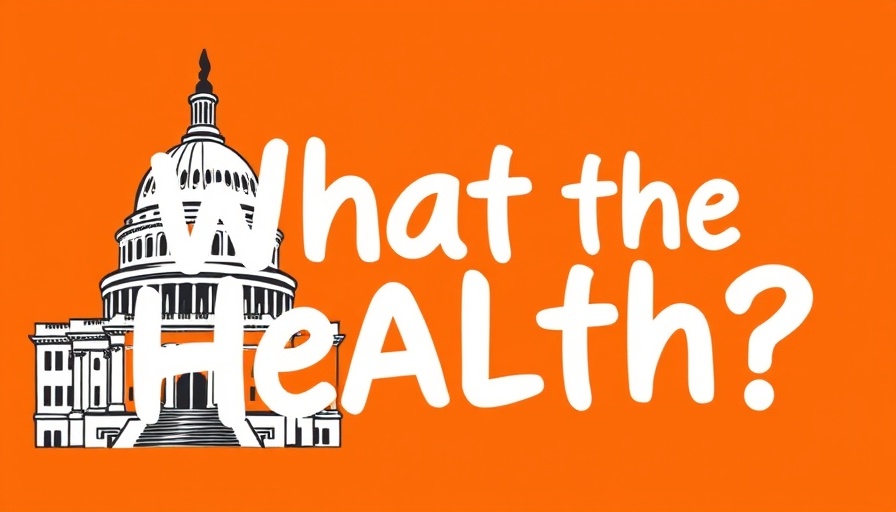
Understanding RFK's Stance on Preventive Care and Vaccine Concerns
As discussions surrounding public health and wellness unfold, few figures have sparked as much controversy and intrigue as Robert F. Kennedy Jr. His latest insights featured on KFF Health News’ 'What the Health?' podcast focus on preventive care and the contentious topic of vaccine-related injuries. While advocates emphasize the necessity of immunization in safeguarding community health, critics like Kennedy question its ramifications, particularly in relation to instances of adverse effects.
The Importance of Preventive Health Care in America
Preventive care remains a cornerstone of modern health systems, aiming to avert diseases before they develop. In the U.S., efforts to bolster preventive measures have been ongoing, with organizations promoting screening, vaccinations, and healthy lifestyle choices. However, the conversation can often become polarized, especially when influential voices challenge the status quo. Kennedy’s recent remarks reflect growing skepticism among certain groups regarding not just vaccines but the broader health care system that prescribes them.
Why Vaccine Skepticism Persists
In today's media landscape, misinformation spreads quickly, and vaccine skepticism has gained a foothold among many. Kennedy has echoed concerns that many feel are overlooked—highlighting cases of individuals experiencing negative health outcomes post-vaccination. This narrative resonates with those who have anecdotal experiences that diverge from the mainstream portrayal of vaccines as universally beneficial. Yet, while skepticism can lead to critical inquiries, it also poses risks, potentially discouraging individuals from engaging in preventive measures entirely.
The Broader Public Health Implications
As more individuals become skeptical of vaccines, public health officials worry about the potential re-emergence of preventable diseases. The World Health Organization has identified vaccine hesitancy as one of the ten greatest threats to global health, urging a reevaluation of communication strategies to build trust. Kennedy’s opinions exemplify a larger societal dialogue on balancing personal freedom with collective responsibility—an ongoing debate that requires nuanced conversation.
A Counterpoint: The Scientific Consensus
It is essential to balance the critique of vaccines and preventive care with the overwhelming scientific consensus highlighting their benefits. Extensive research backs vaccine efficacy and safety, underscoring the role these interventions play in eradicating diseases worldwide. Experts emphasize that perceived risks must be weighed against the proven advantages of immunization. Engaging in informed discussions is vital for a society that values both individual perspectives and the health of the community.
Inspiring Change Through Informed Choices
As Kennedy's views encourage skepticism, they also open doors for an essential dialogue on health care rights and personal choice. Individuals must be empowered to make informed decisions regarding their health. Educational initiatives aimed at dispelling myths surrounding vaccinations can help re-align community perceptions. Informed choices lead to stronger advocacy for preventive care, creating a pathway to better health outcomes.
Importance of Continued Dialogue in Public Health
The ongoing conversation around preventive care and vaccine concern highlights the need for patience and understanding on all sides. Engaging in meaningful dialogue can bridge gaps between divergent perspectives. Understanding the fears and concerns driving vaccine skepticism can ultimately build a more resilient public health narrative. As Kennedy’s voice continues to resonate among segments of the population, public health advocates must remain committed to listening, educating, and reassuring communities about the proven benefits of preventive care.
Ultimately, the landscape of public health is vast and complex, requiring constant evaluation and open conversation. Engaging with diverse viewpoints, while staying true to scientific rigor, fosters a health-conscious society dedicated to everyone’s well-being.
 Add Row
Add Row  Add
Add 



Write A Comment